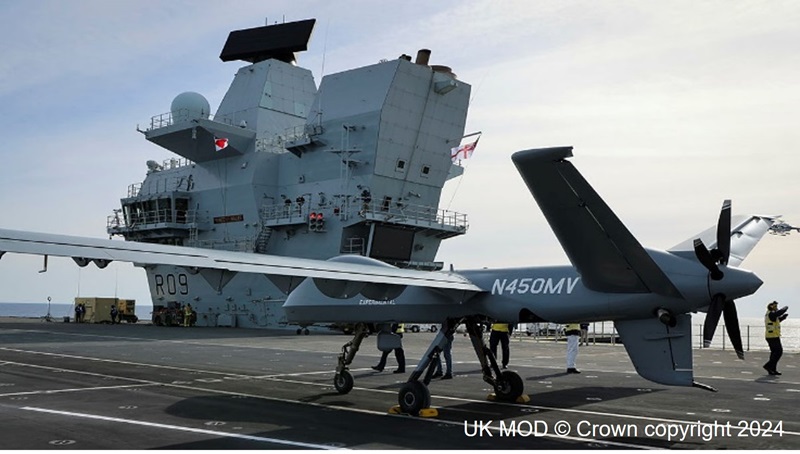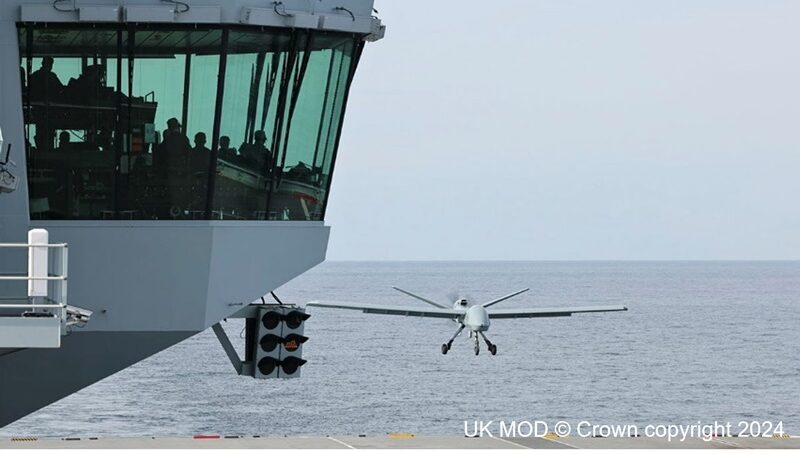
Deploying Complex Systems in Unmanned Defence
The demand for systems to be deployed at pace in any environment has increased following a range of technological advancements which are enabling the armed forces to provide protection where it’s needed. The rise of unmanned technology across all domains, requires system-ready hardware available to operate on deployment, with minimal setup time and installation.
Deploying Unmanned Systems
As technology advances, the use of unmanned systems increases to provide improved situational awareness, rapid response and advancements in tactical situations. Counter-UAS technologies are becoming increasingly vital in protecting our forces, while the complexity of the communication between the command station and UAS requires technology that can operate and survive in difficult environments when needed.
The military has increasingly deployed counter-UAS systems in various military operations and critical infrastructure protection. These systems include mobile units stationed at strategic locations to swiftly respond to unauthorised activity. Additionally, the integration of counter-UAS capabilities into existing defence frameworks enables proactive monitoring and defence measures against potential threats.

Technology Advancements
The advancement of technology has significantly enhanced the effectiveness of counter-UAS measures. The military has invested in developing and acquiring state-of-the-art detection, tracking and interception technologies, from radar systems to electro-optical sensors and radio frequency (RF) detection equipment, capable of identifying and neutralizing hostile drones in real-time.
Integrated systems are critical to support these technologies and needs to be of the highest quality to ensure that it is operational and can survive the harsh and diverse environments they are deployed in while providing reliability throughout the operation.
Rugged Computing and Survivability
The deployment of advanced computer hardware supports the processing and analysis of vast amounts of data generated by counter-UAS sensors and systems. High-performance computing systems and ruggedized hardware deployed in command centres and field operations enable rapid decision-making and response to evolving threats. Additionally, the integration of software-defined networking (SDN) and virtualization technologies enhances the flexibility and scalability of counter-UAS infrastructure.
Rugged computers and enclosures are typically designed to withstand harsh environmental conditions, including extreme temperatures, moisture, dust, and vibration. These systems are often constructed from durable materials such as aluminium, stainless steel, or polycarbonate, and feature seals and gaskets to provide ingress protection (IP) against water and dust intrusion.
Rugged equipment is engineered to withstand mechanical shocks and vibrations encountered during transportation, deployment, and operation in rugged environments. Internal components are securely mounted and cushioned to absorb shock and minimise the risk of damage from the impact or vibration-induced stress. Additionally, shock-absorbing mounts and isolation techniques may be employed to further enhance resilience against mechanical stress.
Rugged equipment is shielded against electromagnetic interference (EMI) and radio frequency interference (RFI) to maintain signal integrity and prevent electromagnetic radiation from disrupting sensitive electronic circuits. Conductive coatings, shielding enclosures, and filtered connectors are utilized to mitigate the effects of EMI/RFI and ensure electromagnetic compatibility (EMC) with other equipment and systems.
Deployed Control Stations
By focusing on deployment strategies, technological advancements, communication protocols, computer hardware capabilities, and protective measures, military defence systems have significantly enhanced its ability to counter the evolving threat posed by unmanned aerial systems.
Utilising ISO containers and rugged rack enclosures as mobile command centres, enhancing control station capabilities, allows users to harness an integrated approach which enables proactive threat detection, rapid response, and decisive action to safeguard critical assets and maintain air superiority in complex operational environments.

Command and Control Stations
Control stations play a crucial role in orchestrating counter-UAS operations and coordinating response efforts. Control stations are equipped with integrated command and control software, allowing operators to monitor airspace and deploy appropriate countermeasures. Advanced user interfaces provide real-time situational awareness, enabling operators to assess threats, track multiple targets simultaneously, and execute precise interception manoeuvres.
Using integrated ISO containers and rugged 19” rack enclosures, as part of its counter-UAS infrastructure, these containers serve as mobile command and control centres, housing advanced sensor systems, communication equipment, and interception technologies.
Deployed at strategic locations, such as military bases, naval platforms, critical infrastructure sites, and forward operating areas, ISO containers provide a rapidly deployable and scalable solution for countering hostile UAV threats. Equipped with power generation, environmental control systems, and secure networking capabilities, these containers ensure operational readiness and sustained effectiveness in diverse environments.
Protection Where it Matters
In conclusion, rugged equipment is essential for ensuring the reliability, durability, and performance of deployed complex systems and operating in harsh and demanding environments. By implementing robust enclosures, shock and vibration resistance, temperature management solutions, sealing and waterproofing techniques, EMI/RFI shielding, and field repairability features, rugged equipment can withstand all the challenges posed by the extreme conditions its deployed in.
Ultimately, the investment in rugged equipment protection pays dividends in terms of increased reliability, longevity, and operational readiness, enabling organizations to achieve their objectives with confidence.
How can Captec Support You?
Explore how Captec supports our Defence customers, or visit us on stand E34 at the Navy Leaders 2024 Combined Naval event at the Farnborough International Exhibition Centre on 21-23 May 2024.
Click here to register for the event, or book an appointment to speak with our expert teams.

